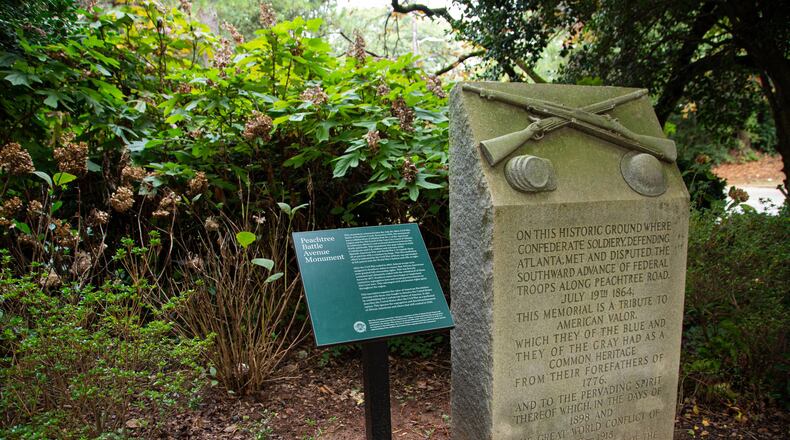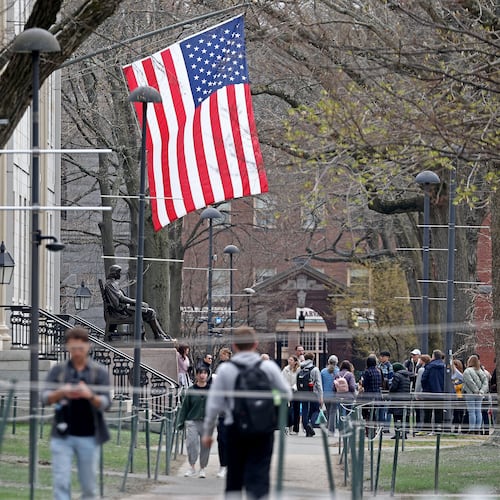Recent protests against Confederate symbolism should come as no surprise to the Georgia legislature.
Though protests against Confederate monuments date back to their erection, the objections to and defacement of Confederate monuments in the last several weeks grow out of protests against systemic racism and the police killings of George Floyd, Ahmaud Arbery, Breonna Taylor, Rayshard Brooks, and countless other African Americans.
The table was reset for conflict in 2019. That year, the Georgia legislature passed a strengthened monument protection law prohibiting local Georgia residents from determining what version of the past is represented in their own public spaces. Ironically, as we now see, these laws ultimately will accelerate the removal of monuments by creating more vitriol, less dialogue, and a lack of democratic options.
Though supporters claim that the legislation protects history, this law effectively reanimates the original purpose of monuments by a state sanction. Monuments are made untouchable and unchangeable, elevating them to objects of veneration and political symbols honoring Lost Cause mythology.
Following the Civil War and Reconstruction, segregation laws effectively institutionalized the pre-Civil War structure of white supremacy. Lost Cause mythology embodies this viewpoint and was carefully woven into school curriculum, books, art, and other aspects of public (and private) life. Modern day proponents of Lost Cause mythology still try to define the Civil War as a conflict over states’ rights, honor, and defense of home and family – in fact, anything other than the actual cause of the war, slavery. Lost Cause mythology also romanticizes slavery as benevolent.
The timing of monument erection illustrates the connections between Confederate monuments, Lost Cause mythology, segregation, and racial violence. Monument building spiked during Jim Crow segregation beginning in the 1890s, a time period characterized by lynching, murder, and other acts of violence against Black people. Another spike occurred during the 1950s massive resistance movement against federally mandated integration. The textbook example is the acquisition of Stone Mountain. Segregationist Gov. Marvin Griffin made a campaign promise two months after the 1954 Brown vs. Board of Education decision to purchase the mountain and create a Confederate memorial. The state purchased the mountain in 1958, started work on the current carving in 1964, and cut the ribbon in 1972. This is hardly a result of a desire to educate about the Civil War, but instead an outsized symbol of opposition to integration.
I agree that history should not be erased. Fortunately, we have books, archives, historic sites, parks, and museums to help us make sense of our history. If any history is in danger of being erased by removing Confederate monuments, it is that of how Lost Cause mythology seeped into every aspect of American culture, down to imagery present at courthouses, state capitols, and town squares. This is indeed a history worth exploring, and Atlanta History Center has done so through exhibition panels placing some Atlanta monuments in historical context.
I have previously argued that placing monuments in historical context could be a solution. I still think this might be viable for some situations, but all options, including removal, must be on the table to arrive at a good-faith community consensus. In many instances, adding historical context to a monument comes too little, too late. We at Atlanta History Center believe the status quo of leaving monuments to stand without historical context is not a principled option — they should either be contextualized or removed. We remain committed to providing research resources to help inform any action a community chooses to take. Since 2016, our online toolkit has helped communities have historically-based discussions about Confederate monuments.
Georgia’s monument protection law, however, undermines the process of community engagement. The law eliminates the possibility of democratic consensus-building by permanently erasing an option, creating a false choice, animosity, and lack of trust from the outset. How can communities have productive conversations knowing that deciding to remove monuments, even after thoughtful engagement, is not legally possible?
Monument protection laws are rooted in a fundamental disagreement about the causes of the Civil War. It is not surprising that Lost Cause mythology is pervasive to this day — though many Black and allied voices consistently challenged Lost Cause mythology, those voices were consistently suppressed or ignored. At the same time, many white Southerners continued to hear this narrative from the sources they most trusted. In the year 2020, on the eve of the 250th anniversary of the Declaration of Independence, it’s time to stop fighting the Civil War. It’s time to let go of the false and destructive rationalizations that comprise and sustain the Lost Cause.
We have to be honest about the past if we ever want to build a foundation for understanding the present and preparing for the future. That can start with the state legislature allowing local communities to control their own public spaces, a bedrock democratic principle. Repealing the law would remove one more impediment to creating the kind of communities Georgians want and deserve.
F. Sheffield Hale is president and CEO of the Atlanta History Center.
About the Author
Keep Reading
The Latest
Featured



